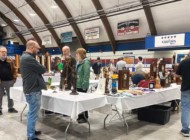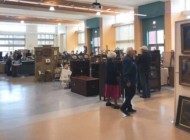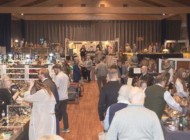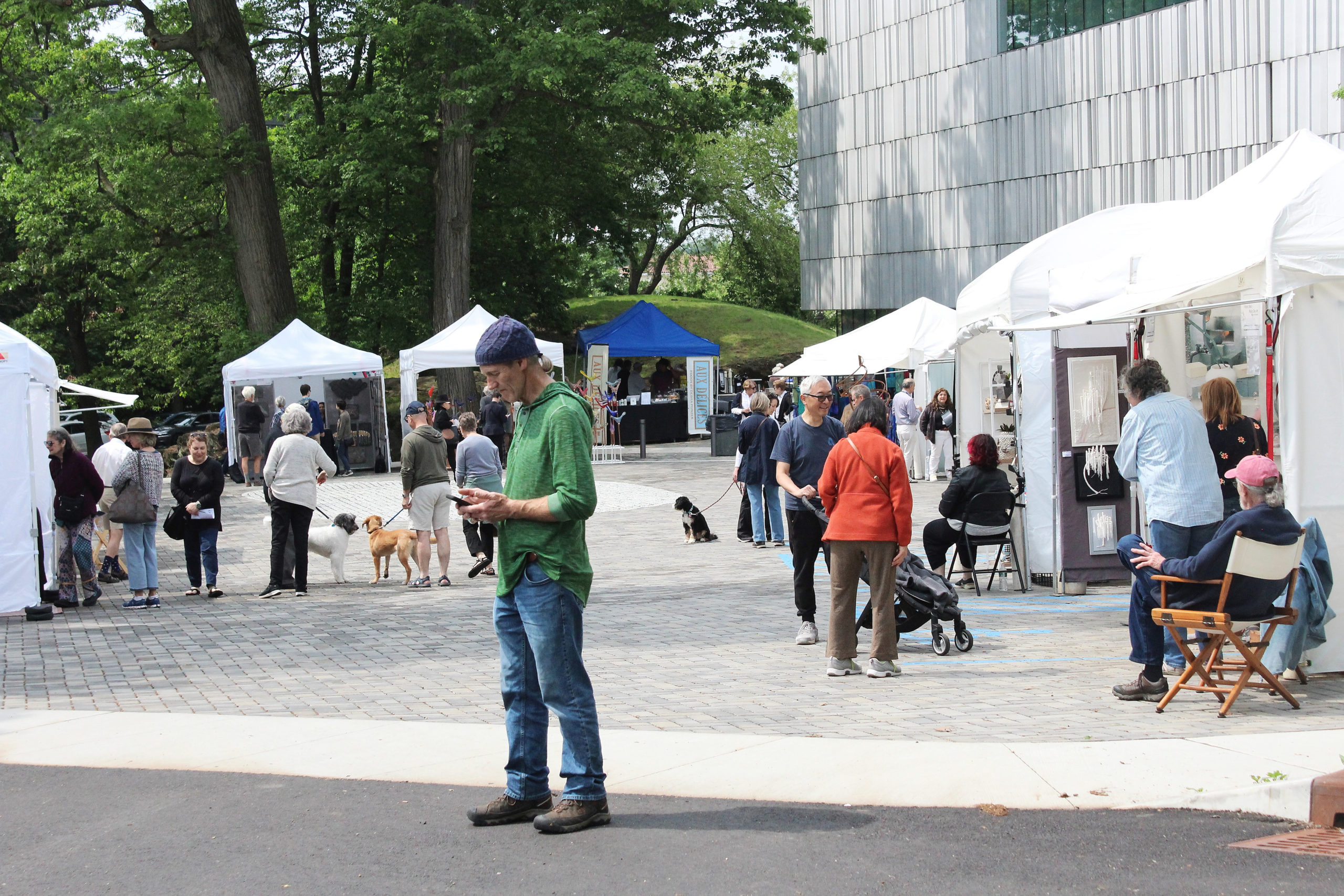
A dog-friendly venue, the festival drew a good crowd of shoppers on Sunday after a rain-soaked Saturday curtailed some of the gate.
Review and Photos by W.A. Demers
GREENWICH, CONN. — Contemporary handmade crafts were the order of the day on May 20-21 as the newly expanded Bruce Museum hosted the 38th Outdoor Crafts Festival, a juried show featuring 55 exhibitors each day from 10 am to 4 pm. Managed by the indefatigable Sue Brown Gordon, with white tents lining the museum’s drive and parking area, the event’s first day was somewhat of a washout as rains pummeled throughout the day. Sunday, however, dawned gloriously sunny and exhibiting artists made up for lost time presenting a dizzying variety of handcrafted items ranging from ceramics, jewelry, wood carvings, textiles and more.
Not only were shoppers enjoying great weather and compelling art on Sunday, more importantly they had a chance to talk with the featured artists, present throughout the entire weekend and offering their works for sale.
And the artists come from all walks of life. Some are schooled in their craft, some are self-taught but with an appreciation for art history and a curiosity in trying new techniques or of harnessing technology to create something new and interesting. All seem to understand the importance of creating items at various price points so the variety of each category in each booth was substantial.
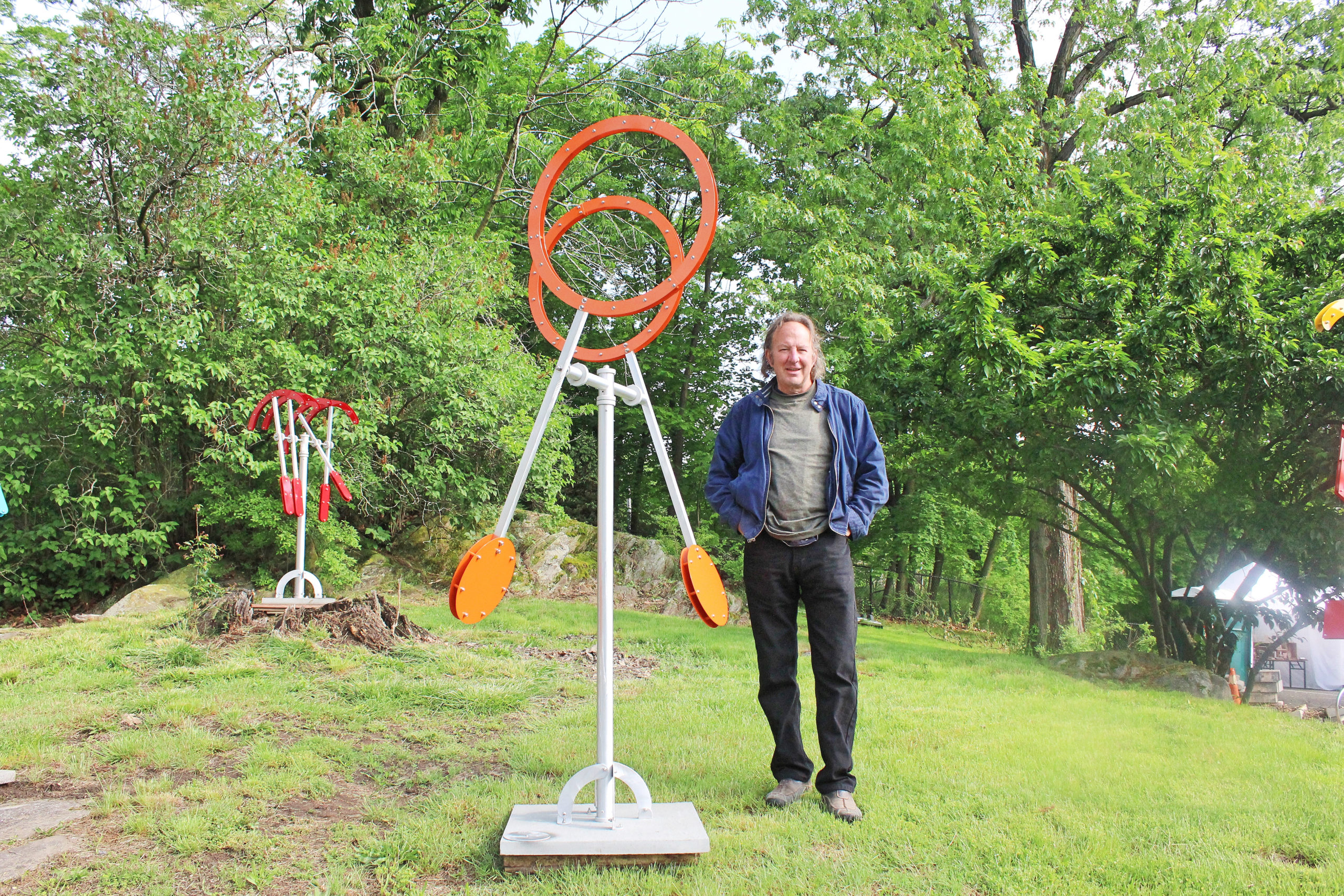
Kinetic sculptor Drew Klotz of Weston, Conn., was awarded the first-place prize in this juried show for his whimsical creations made of aluminum and stainless steel and mounted on stands. His tallest sculpture, 23 feet high, is being made to go in front of the town hall in Pound Ridge, N.Y.
Winning the show’s first place prize was kinetic sculptor Drew Klotz of Weston, Conn., for his whimsical creations made of aluminum and stainless steel and mounted on stands. Horizontal frames mount aerodynamic shapes with sensitive bearings that interact with the gentlest of breezes and wind currents to provide ever-changing rhythmic and wave-like patterns. His unique sculptures are in private collections throughout the United States. His tallest sculpture, 23 feet high, is being made to go in front of the town hall in Pound Ridge, N.Y. There were several of his smaller sculptures oscillating in the calm breeze on a grassy knoll near the museum.
It was interesting to note that several of the artists were “corporate refugees,” having left the workaday world, especially during the Covid-19 pandemic, to follow their creative and marketing passions. A prime example at the festival was Carol Gingrich, a Bush Hill, Penn., fiber wall artist who took her 50-year experience in embroidering to employ it in her original designs and techniques, which act like “living art.” Her “Willows,” for example, feature tendril-like “foliage” that is posable. “Life is allowing me to live the life I always wanted,” she posts on her website, “creating art one stitch at a time.” On Sunday, she took a commission from a customer who wanted her to make a larger version of a New England woodland scene with birch trees. Her pieces are created with similar nature themes, combining free motion machine embroidery, hand stitch thread painting, hand stitch sculptural stumpwork and acrylic painted backgrounds to create depth and texture. Most of her pieces are worked from photographs that are transferred to material either by printing or painting.
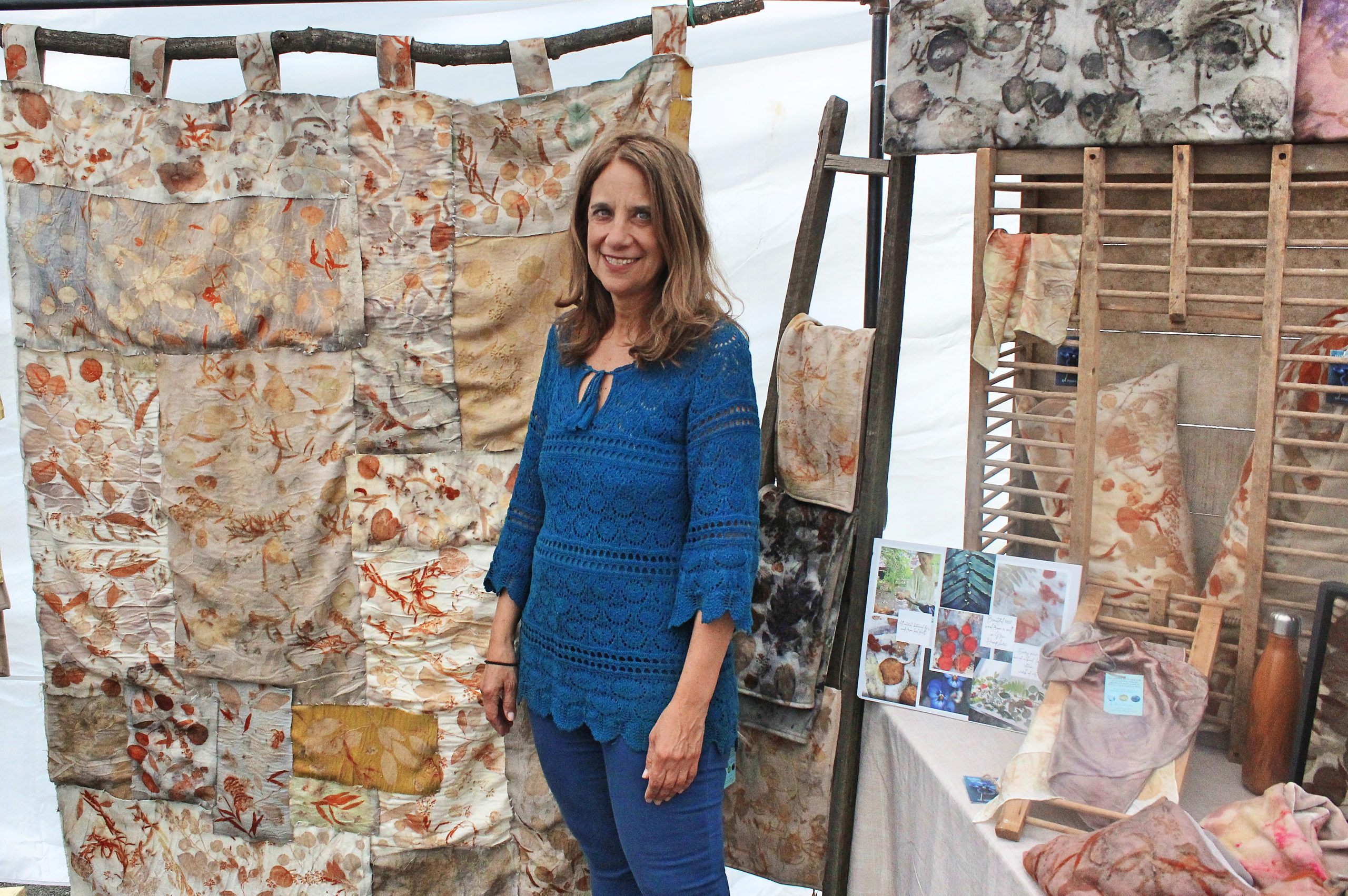
Wilton, Conn., fabric artist Bonnee Pecquex.
Wilton, Conn., fabric artist Bonnee Pecquex used to operate a physical floral business but now runs her craft business, which she calls Florabundance. She utilizes what she calls “eco printed art,” which uses flowers, leaves and other botanical material to print designs on fabric. The actual leaves and flowers produce tannins, she explained, and these react to the silks, cottons and other protein fabrics that become her canvases to produce stunning floral patterns of the items she sells at shows and on Etsy — all proclaiming her philosophy that “every arrangement is a celebration of nature.”
Also in fabrics, Elizabeth Tomczyk, a Vernon, Conn., artist makes items that emphasize sustainability. She said she makes frequent trips to Spain to source the natural cork fabric that she uses to make a variety of items decorated with her laser-burned designs, including card wallets, zipper pouches, passport holders and wallets. Self-taught, her booth was chockablock with a large selection of cork-based personal items. You can find her Etsy shop at Novaclavi Design.
Another “corporate refugee,” in this case, someone who turned to creating ceramic art was Jennifer Cranna Cahalan. She said she left her job as a retail manager after the Covid-19 lockdown to pursue her self-taught “dabbling” into a business. “I always did a lot of painting,” she said, “and this is like painting on clay.” Her business is a nod to her grandmother who had 14 children and would often bring out her transferware at family gatherings. Cahalan adds a modern sensibility to her pieces, so they evoke the colors and patterns of her grandmother’s transferware but in a more millennial form.
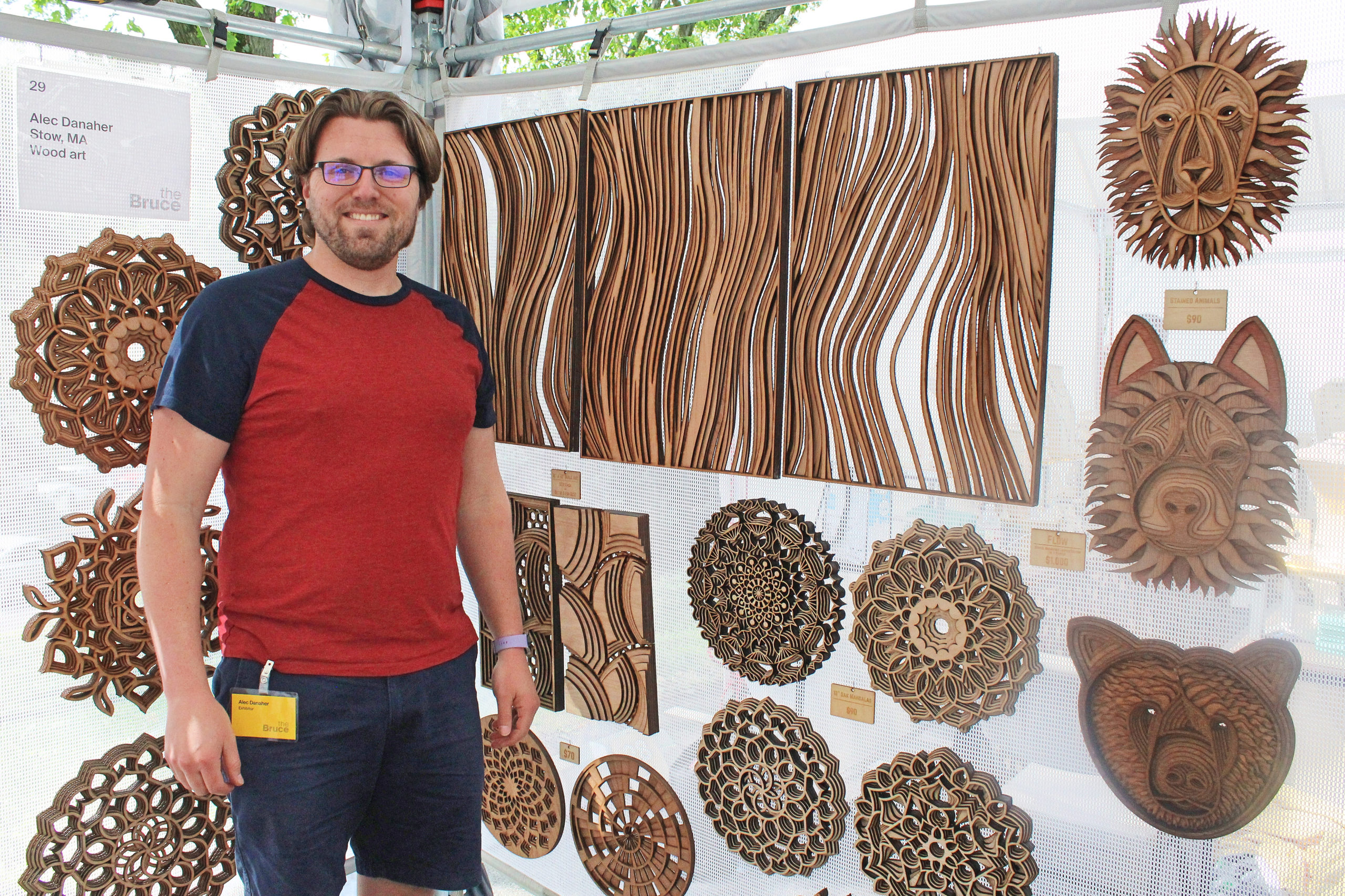
Artist Alec Danaher, Stow, Mass.
It’s also interesting to note the degree to which technology is being harnessed in the world of crafting. Artist Alec Danaher of Stow, Mass., for example, creates laser cut artwork of various woods like luan, oak, Baltic birch and others to make a dizzying array of wall art and smaller items like bookmarks, trivets and lanterns that utilize LED tea lights for illumination. He’s been making these designs for about four years, designing them with software. His art practice started in 2019 when he became a member of a local makerspace. “I immediately fell in love with the laser cutter and couldn’t stop coming up with ideas of things to cut. I ended up getting my own laser cutter,” he writes on his website. He gets inspiration for his work from a variety of sources, including abstract art, mathematics and nature-inspired patterns, and patterns from various cultural traditions. “I do most of my designs in Rhinoceros, a 3D CAD software and Inkscape, a vector graphics editor. I went to school for engineering, so this lets me dust off some skills that I don’t use as much anymore in my day job.”
Even Avi Baron of Southbury, Conn., who crafts traditional items like wood utensils and furniture as Avi’s Creative Designs, is incorporating technology, in one case, a stylish wooden “boombox” using exotic and domestic woods that employes Bluetooth so you can take it to the beach or picnic. He showed a variety of his designs at various price points, including cutting boards, pencil holders, coasters, bottle openers and USB cord holders.
Finally, let’s pose the question, why attend a crafts festival when a myriad of online shopping platforms provide a contactless way to browse and buy such items? You can’t find a better answer to this than to spend a while at the booth of Les Olin and Joanna Case of Mystic, Conn. All of the artists will spend time talking with customers about their work, but the two raku artists take it up a notch. The inner wall of their tented booth is a photo gallery, showing in detail their backyard kilns and sequences of production. And they are proud to tell you about the various workshops they have attended around the United States in order to perfect their craft of alternative firing techniques, one of which involves horsehair that is laid on the unfired clay and produces a smoke tail on the piece during firing.
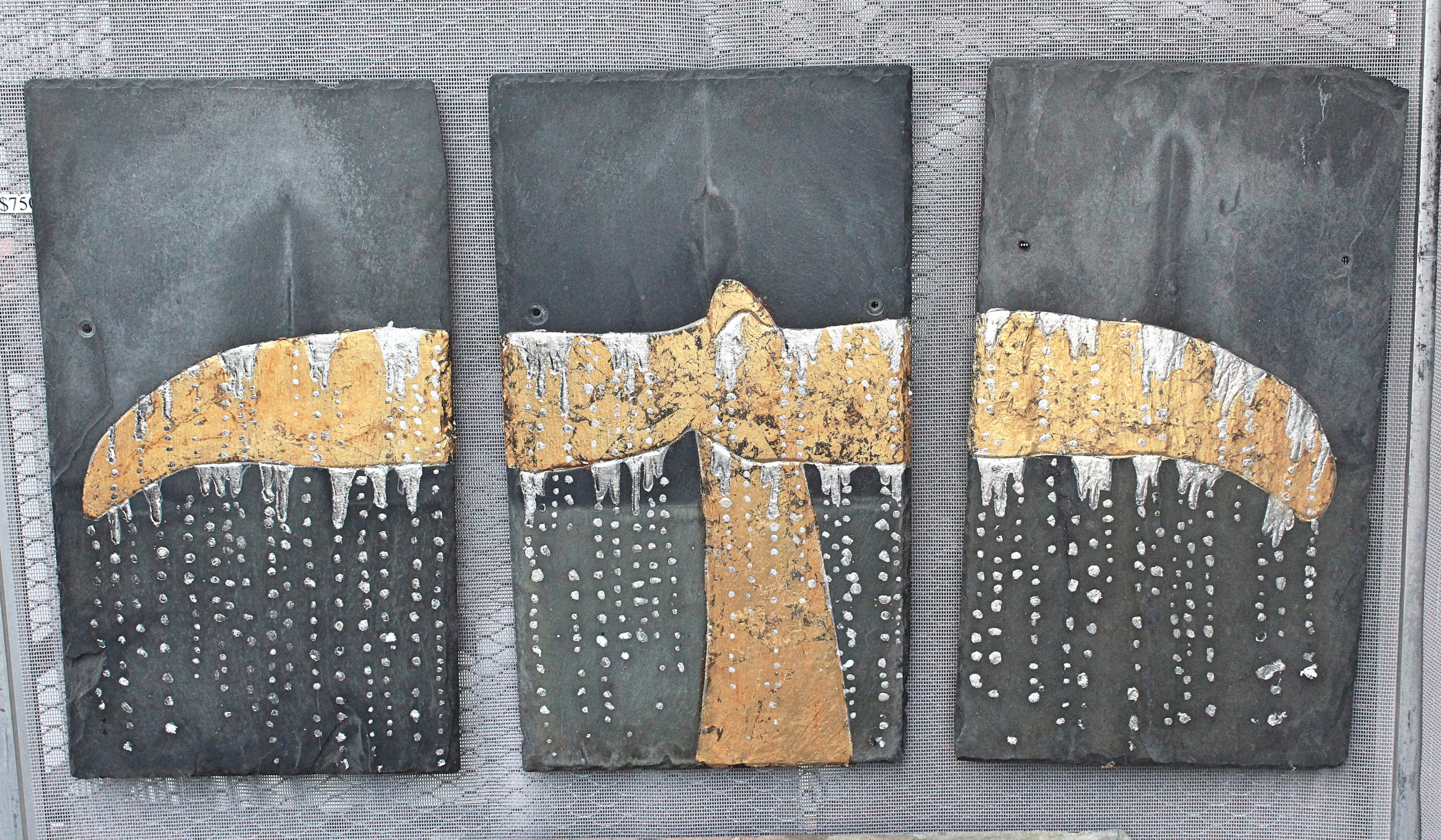
Michael Updike, Newbury, Mass.
Likewise, woodturner Jim Sprinkle of Charlottesville, Va., who took the third place prize in the juried show, will tell you about how he struggled to find a way to use the odds and ends of exotic woods he uses to turn bowls and came to invent his “Village” bowls, so named because they comprise woods from all around the world. They are both artistic and sustainable.
The next Gordon-managed show is the Norwalk Arts Festival at MOCA, Westport, Conn., June 24-25, followed by a new show, the Lenox Summer Art Festival, July 15-16. For more information, www.gordonfineartsgallery.com or 518-852-6478.



























